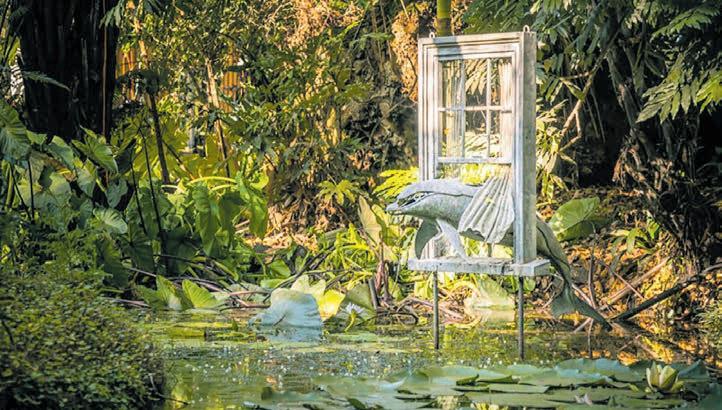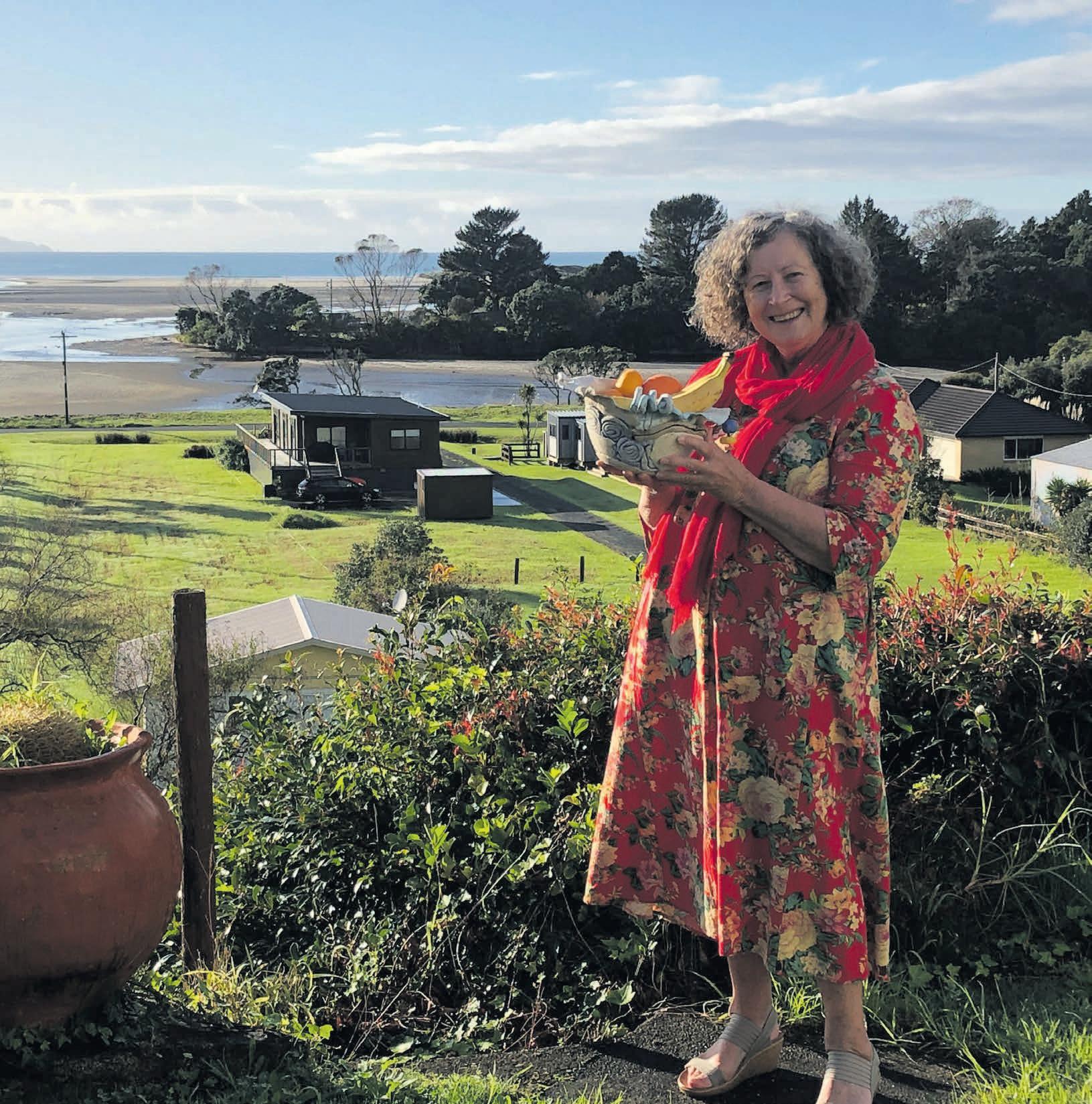

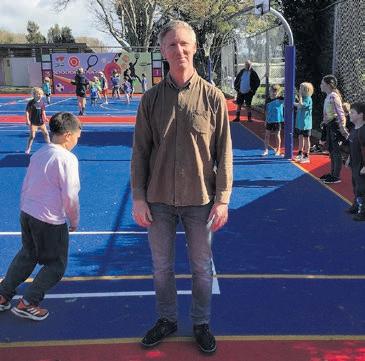
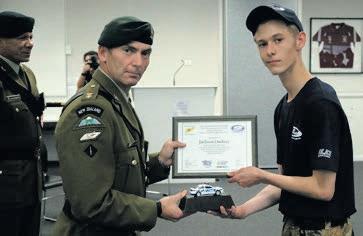















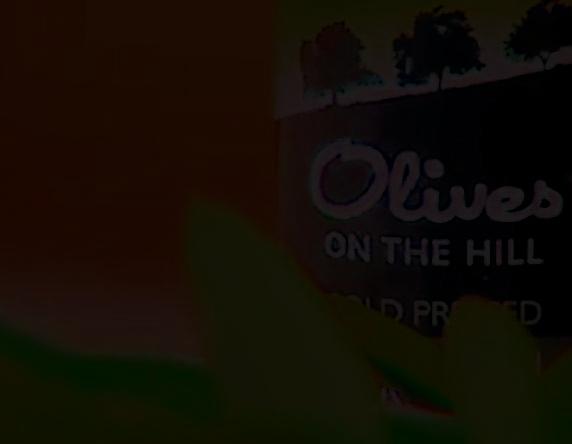
The Kaiwaka Whangārei Hospital Knitting Group began some 10 years ago as a result of Gale Matheson having an amount of excess wool and thinking the Whangārei Hospital could use help.

“One day, I rang the hospital thinking they may need knitted items for children,” says Gale.
“The Ward 2 playroom gave me a list of things they could use, so I let people know through the Kaiwaka Bugle that I was knitting for them, and four ladies joined me. We now have 15 knitters that meet on the second Tuesday of the month at the Archie Bull Hall, 11 Kaiwaka Mangawhai Road. Anyone is welcome to join us, and we appreciate donations of wool to help us.
“One lady moved away and still sends her creations to me. I tell people what we require each month, and others donate wool to us, which is greatly appreciated. The knitters don’t all turn up every month, but they ensure their work gets to me, and I deliver it to Ward 2 for distribution.”
Knitters can make their projects as large as they like. The group knit singlets, dolls, blankets, cardigans and items such as gloves for teenagers and adults, too.


“We make beanies, scarves, knee rugs, jumpers, slippers and fingerless gloves. The larger items go to the renal unit because when patients get blood transfusions, they tend to get cold. We knit jackets, booties and singlets for the babies in the Special Care Baby Unit,
and some people knit for older children. The items are always well received at Whangārei Hospital, and I get lots of letters of thanks.
“The problem they have is most people don’t realise that Northland has a lot of people in need and send things to Auckland. We, as Northlanders, need to support our communities up here because there are a lot of people who have absolutely nothing. The hospital often runs out of the things we make, but people who receive the items really appreciate it.
“The ladies also make little calico dolls that the doctors use to show a child what they are going to do to them. They will put a bandaid on the spot or show them how a stitch will look. The child then gets to keep their doll. We also make bags for their belongings that they can keep instead of them having a plastic bag. The initiative has certainly grown, and we are currently in the process of arranging a pattern to make operating gowns for 8–12-year-olds because they use adult sizes and they are too big. These will stay in the hospital. There is a big need for what we do, and it is nice to know that we are helping people in need across Northland.”
To donate wool or for more information, call Gale on 027 414 9576. ¢

Northern Rescue Helicopters, the operators of Northland Rescue Helicopters and Auckland Westpac Rescue Helicopters, were humbled to receive the Gold Award: Operational at the 2022 New Zealand Search and Rescue Awards held at Parliament on Thursday night.

The crews were formally recognised alongside emergency partners the Northland Police SAR Squad, Police National Dive Squad and Maritime NZ Rescue Coordination Centre. Crews of the Florence Nightingale, the Pacific Invader and Kobe O’Neill were also recognised for their outstanding rescue efforts when the charter fishing vessel Enchanter capsized off the North Cape on the evening of March 20, 2022.
Award recipients pilot Lance Donnelly, co-pilot Alex Hunt, and critical care paramedics Josh Raravula and Paul Davis were aboard the Sikorsky S-76C++ helicopter NZ-HQO and had a significant task to perform on the night of the rescue.
“We have the utmost respect for the first responders we work with 24/7, along with all the volunteers in our community working hard to keep each other safe,” says Lance.
“That teamwork was apparent on the night of the Enchanter rescue when we all pitched in and backed each other in our collective efforts to find survivors.”


Captain Donnelly’s tight team of four were responsible for retrieving survivors from the swollen waters under the darkness of night. The rescues required courage and the best of their skills and abilities. After retrieving three people from the hull of the Enchanter, they performed a second set of difficult and
hazardous winch retrievals, with two more lives saved as a result.

“We didn’t know what to expect before arriving in the search area, so we prepared for multiple scenarios,” says Paul Davis.
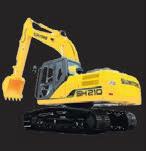
“Locating five survivors and bringing them back to safety and their families was an amazing feeling. This was certainly one of the most challenging rescue missions our organisation has been involved in.”
Survivor Shay Ward says this year’s top recognition is well-deserved.
“The guys at Northland Rescue Helicopter flew into the unknown, risking








for the Northland Rescue Helicopter service. It’s well-deserved, and we couldn’t be prouder.”
themselves to save us. We are all so grateful for them and what they did, they deserve all the accolades possible for what they achieved.”

Northern Rescue Helicopter CEO Craig Gibbons said: “With eleven nominations for the Gold Award: Operational, this recognition is significant, particularly


The NZSAR Council acknowledged other agencies who contributed to the significant operation, including the Auckland Westpac Rescue Helicopter team, who were actively involved in recovery efforts for two days following the capsize, utilising their state-of-the-art Leonardo AW169 helicopters.
“The Enchanter rescue took place at night, in a remote location, during turbulent weather. It demanded an incredibly high level of skill and teamwork between agencies with no margin for error,” says NZSAR secretariat director Duncan Ferner.
To support the Northland Rescue Helicopter go to nest.org.nz, or to support the Auckland Westpac Rescue Helicopter visit rescuehelicopter.org. nz. ¢
“We have the utmost respect for the first responders we work with” The Northland Rescue Helicopter crew Paul Davis, Lance Donnelly, Alex Hunt and Josh Raravula receiving the Gold Award: Operational at the 2022 New Zealand Search and Rescue Awards for their rescue efforts of the Enchanter fishing vessel Photo Mark Coote
The team at the North Rodney Blue Light Ventures say they have seen a lot of happy faces enjoying the activities they have been providing for youth ages 8–17 years.
“Bluelight has been around for 40 years, starting as police officers doing discos for kids,” says community youth coordinator Shane Gould.
“I have been involved for 28 years, and we have since expanded into activities at school camps and things. We are based at the Wellsford Police Station and cover the Warkworth area, which goes as far as Maungatūroto.
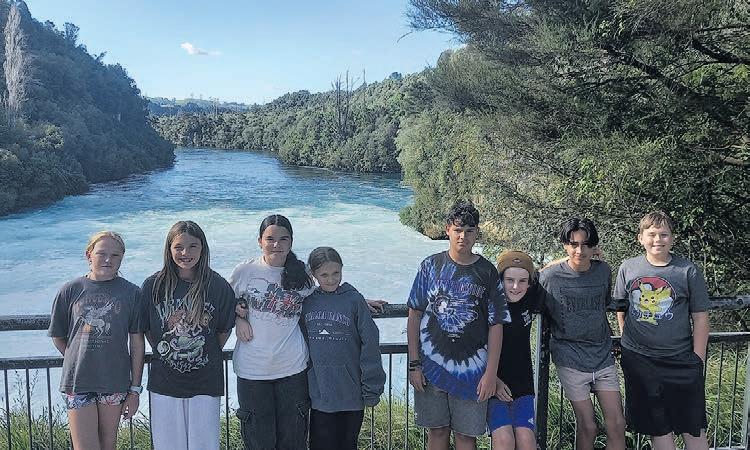
“When I came to Blue Light, there was a need for school camp activities, so I came up with a whole range of outdoor equipment for them to engage with. We also have the qualifications to run the programmes and network with other community groups as well.
“Students have the chance to do things practically, like engage with the youth and emergency services. There is a lot of new potential with community and police partnerships as we provide fun and challenging activities for youth to make positive choices for themselves and their community.
“Blue Light provides a wide range of outdoor activities, including kayaking, stand-up paddle boarding, fishing, air rifle and archery for school camps and community organisations. The feedback we get from students, teachers and volunteers is very encouraging and even funny. They continue to enjoy my jokes which are still the same 28 years later.”
A recent highlight was Wellsford local student Jackson Lindsay achieving the Trainee Excellence award at the Blue Light and Defence Force Lifeskills course on May 1.
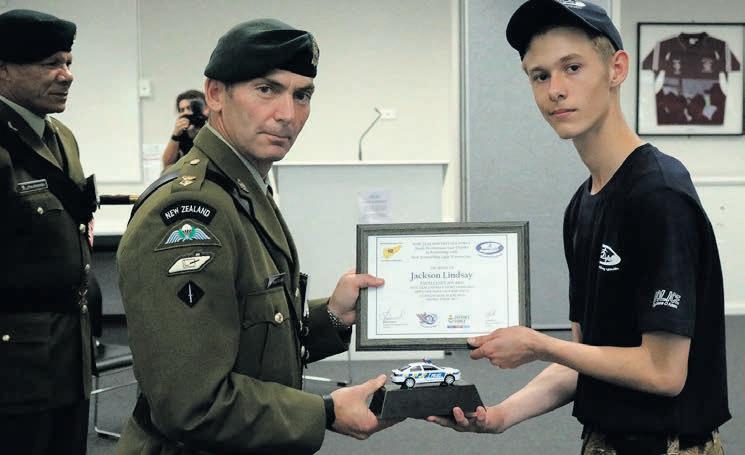
“Jackson was at the Defence Course Camp, and his achievements were fantastic. Twenty-six other trainees also achieved NCEA 13 credits as a part of the five-day course.
“This was the second course of the year, with three other Wellsford students attending in January.
“We enjoy giving young people opportunities for things that they have never experienced before and want them to enjoy what’s on their doorstep, so if
they have never been to a lake or beach, we try to take them. Eight Mangawhai Beach School students attended a threeday Blue Light Activity camp held at the Blue Light Lodge near Taupō in April. They enjoyed a range of fun activities with an amazing race, hot pools, high ropes, team building, ten-pin bowling, trampoline park and the Rotorua luge on the way home.
“That is what Blue Light is. It is a youth, community and police initiative, and it is fantastic to be able to support our youth with what we do.”
Check out the North Rodney Blue Light Ventures Inc Facebook page or go to bluelight.co.nz for more information.
With a proven product designed and fabricated for the marine environment that is our front yard, we are a local business that specialises in building functional outdoor living spaces.


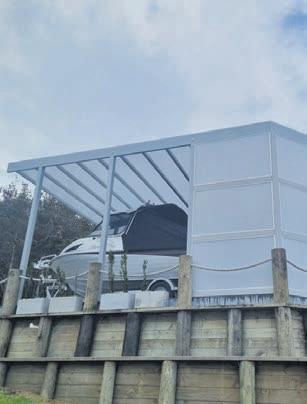
The amazing panels block out the UV and reduce the transfer of heat up to 40% without losing light into your living areas.
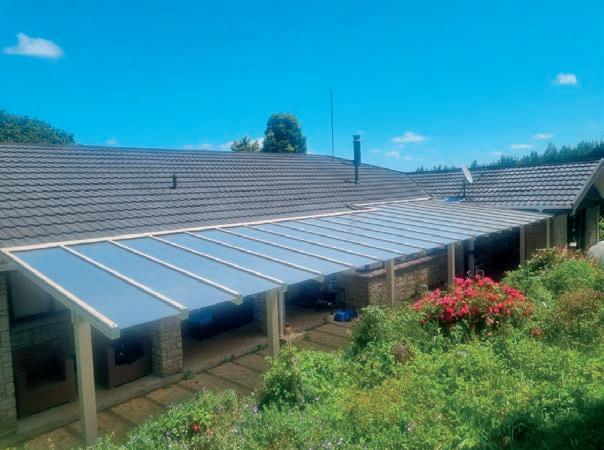




Add vertical glazing and/or blinds to further enhance your new space.
Based in Bream Bay, we cater to enquiries around Northland and have plenty of clients who are willing to showcase their structures to interested parties.
Get in touch, to find out how we can create a beautiful outdoor room at your place.
year warranty on roof panels that create shade without losing light




The Kaiwaka community saw dozens of people take part in a free community planting day last Sunday as the Kaipara Moana Remediation team joined forces with locals to begin planting 1,600 natives on the banks of the Kaiwaka River Reserve.
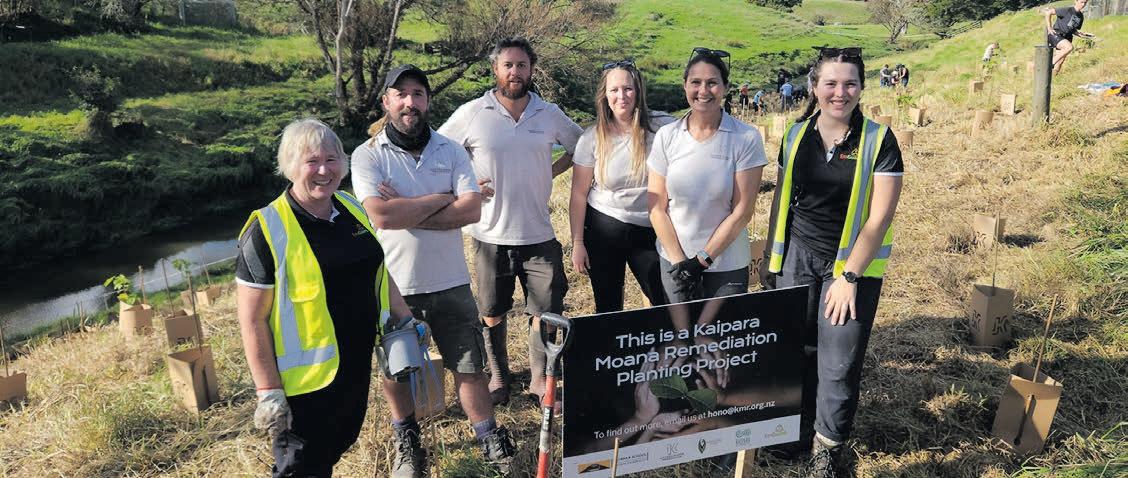
“It was an inspiring day, made even better by the quality of the native trees and grasses going in on the riverbank,” says KMR leader Justine Daw.
The river is a taonga for Te Uri o Hau and was once full of eels and baby mullet, with nearby trees full of kingfishers and other birds who fed on the local insect life. The mahi was continued on Monday with 150 Kaiwaka Primary School students doing their part to help reduce sediment and silt flowing into the Kaipara Harbour.
“This is another example of KMR’s focus on developing partnerships to help iwi, hapū, schools, landowners and communities do the right thing by planting trees in areas that need it. In this case, within a flood zone to protect precious soils from washing off the riverbanks and to slow water flows to reduce downstream damage.
“2023 is the winter of planting. We are looking to partner with others to plant 400,000 natives this winter alone and would love to hear from anyone passionate about the environment, with erosion-prone land ready to plant and groups able to do the planting. The more communities KMR can support to take action — the better.”

KMR partner and long-established Kaiwaka native plant nursery Rural Design provided the native trees and
grasses for the community planting, with general manager Blake Worsfold saying it was satisfying to help.
“This activity is very important for our community and the efforts from so many people who are helping restore the Kaipara Moana,” says Blake.
“We are really excited to be part of this work because of what the longterm benefits will be for the health of the Kaipara Harbour.”
Helping protect the plants from pūkeko and other fauna are locally designed and manufactured Emguard




cardboard plant guards that were put around the planted trees.
“I think the KMR programme is brilliant — absolutely fantastic,” says Jan Fryer, the director of FuturEcology director, the Nelson company behind Emguard.



“The key to the success of getting plants established is to get the planting and the methodology right at the start. We want to see KMR recognised as one of the best community projects around, and we want to remain a part of it.”
Jason Marris says, “Hats off to the KMR team for all their work. We’re incredibly proud to be working alongside them in the Kaipara District. As an organisation, we are always looking for ways we can support the work KMR are doing through our own work programme. We encourage everyone to get behind any planting days they hear about coming up. It’s a group effort.”
For more information on the Kaipara Moana programme, contact hono@kmr. org.nz. ¢




As gardens grow ever smaller, the quest to find the perfect tree to fill a space without ending up as a towering giant can be lengthy — consider a flowering dogwood.
Spanning the regions of Asia, Eurasia and North America, these trees produce prolific showy flowers and berries to bring colour to the outdoor setting.
However, one species, the strawberry dogwood, an Asian species, has established itself in New Zealand and is now considered a serious pest plant. These rapidly growing trees can reach up to 20 metres high and are no longer sold in nurseries. Still, many other species of dogwood are available and come in several varieties of colour and form. While some cultivars are evergreen, most
dogwood tree species are deciduous and produce blooms during the spring growing season.

The flowers come in shades of pink, white, cream and red, making these trees an attractive choice as an option for a garden centrepiece. Most have a weeping habit making them ideal for a central position in a courtyard or smaller garden setting.
However, the trees need a sunny to partially shaded position and welldrained, rich soil to thrive. Amend areas with heavy clay by creating a raised
area above the soil level, then add compost and good-quality topsoil before planting. Dig the planting hole twice as wide and to the same depth as the root ball. Remove the tree carefully from its pot, then place it in the centre of the hole.
Backfill it with the soil and water carefully. Ensure the tree is wellstaked to prevent the roots from being wrenched in adverse weather. Keep the tree mulched during the dry periods to conserve soil moisture and keep the roots cool.
Here are a couple of picks to consider.
Cornus Benji Fuji is a pink-flowering Asian variety with a multi-stemmed growing habit. Large star-shaped pink flowering bracts, deep green leaves that change colour before falling in autumn.
Cornus Cherokee Chief is a spectacular ruby-red flowering hybrid from North America producing bronze-red leaves in spring followed by the flower bracts. Leaves are green during summer, then change tone in autumn. Visit your local garden centre or look online for more information.
Tomarata school staff and whānau welcomed new principal Chris King and his wife Victoria to the school this year.
“Victoria and I spent two and a half years at a school in Invercargill prior to this, where I was the deputy principal,” says Chris.

“Victoria is taking the Year 7 and 8 class here. We went to Invercargill because we took time out to try living in different parts of New Zealand and gain varied experience.

“I grew up on the North Shore of Auckland and then taught in West Auckland and Remuera before teaching at the Institute of Education at Massey University. That was a cool job
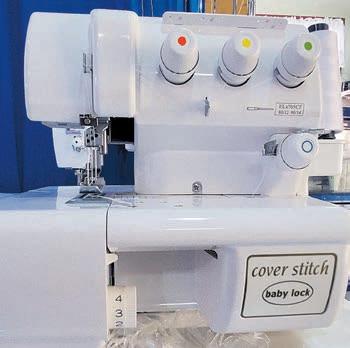
travelling around the country working in classrooms mentoring teachers on culturally responsive teaching practices, and focussing on mathematics.”
In his role, Chris was able to interact with hundreds of classrooms while working alongside the teachers.
“We are loving it here at Tomarata. There is a wonderful school community here, and we are in a beautiful location. We are excited to be at a school that focusses on the outdoors and being a part of nature. We have the Garden to Table programme run by Sally Usher




with chickens, an orchard and vegetable gardens, and Cara Jackson is in charge of our off-site nature classroom on land donated to the school to use.
“The outdoor classroom is set up with the students being kaitiaki of the steam. They test the water quality and feed the eels while engaging in their outdoor education on a weekly basis. They do a number of things to ensure the land is well cared for.

“We also have Emily Clark delivering our performing arts with drama, dance and music. Part of our motto is, ‘It’s a



great little country school’, and it really is. Anyone is welcome to come along. We have students from Mangawhai to Wellsford as we cater for families who want something a little bit different.
“The school was established in 1934 and is about to turn 90 years old. When Victoria and I looked at the position, we thought it’s the kind of environment we want our daughter to learn in when she starts school at the end of the year. It is certainly a friendly and welcoming environment, and the future looks bright. We are certainly blessed to be here.” ¢
Toilet building at your cost. These toilets are the good looking, sensible answer to human organic waste management. Environmentally friendly, they are economical easy to install and require little maintenance


Toilets are vented so there are no unpleasant odours, no need for toilet cleaners or room deodoriser. They meet all required NZ Standards and building codes and are in use by DOC and regional councils. Cheaper to purchase and install compared to other systems, right from the start. You can leave the system to work for you and in the end will have safe, composted material that can be used in your gardens
Great for you and Better for the planet!
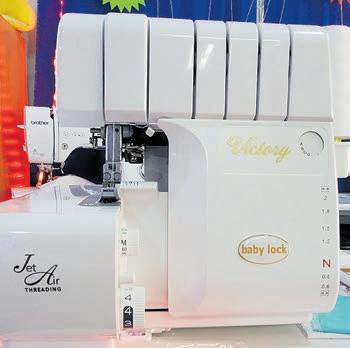






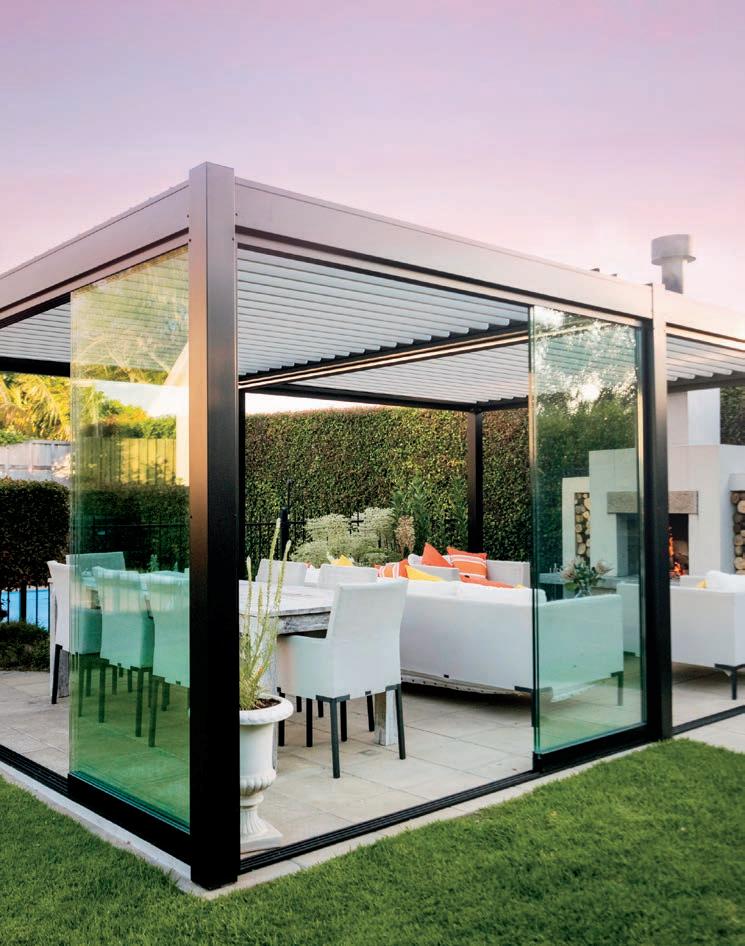






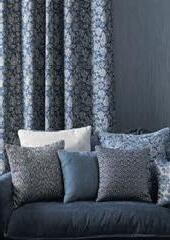


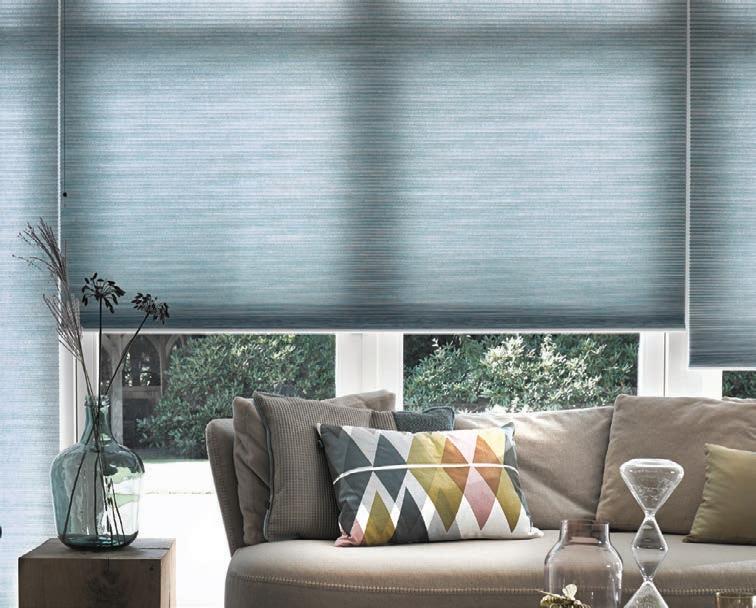
























We’re constantly being told about the latest in design trends and what is up-and-coming. It’s rarer, however, to hear the experts admit to trends they say they’ve got wrong and now wish would go away.
The interior design mantra for 2023 is very different from the playbook for pre-pandemic homes. There are many designers who say that the intensive experience of lockdown and the intimacy, if forced between homeowners and their properties, has changed the psychology of what’s desirable indoors. Here are a few trends on the way out.


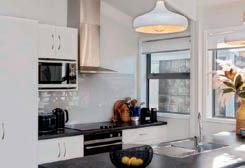
Open-plan living is getting deconstructed. A new philosophy prizes the breaking up of large spaces into nooks and nests designed for a single purpose, creating privacy and functionality. Big spaces are now being broken up with free-standing large furniture pieces, screens and low walls topped with indoor plants, reducing the sense of vast, gallery-like interiors. If space was the new luxury in the 2010s, a multitude of private, highly personalised and comfortable spaces is the luxury of the present day.
Minimalism and the ‘invisibility of ownership’ is out the door. The Marie Kondo effect and the allure of rooms which look as if they belong to robots, are getting stale for many designers. When once it was all the rage to strive
for the look of a room that was never lived in, with one or two items of stark and angular furniture, now the trend is to create spaces which look elegantly inhabited. There’s a sense of curated intimacy to such spaces; things on display hint at your projects, passions and pastimes and give a hint of personality.
Grey, beige and white have been replaced by colour, and straight lines are slowly giving way to curves and rounded forms. It’s as if the trend toward working from home has accelerated the move away from giving one’s home the mood of a corporate office. Organic shapes, from soft and rounded couches and chairs to voluptuous arches and turnedwood furniture, dominate the wish lists of many international designers today. This opens the door for a blend of retro, truly antique and hand-made options to add more detail and personality to interior spaces.
The end of grey-on-grey also opens up new considerations for feature colours across the home, and the successor to the feature wall is here: the feature ceiling. While some go so far as to








embrace rococo plasterwork in metallic tones as a framing device, others have opted to use flat, warming pastels or splash out with mono-block colours.
What was the most hated trend of the past decade? Thankfully, it’s not seen much in New Zealand, but in the US, they
call it ‘Barbiecore’, after the popular doll and her love of saturated pink on every surface. Apparently the corals, fuchsias and magentas associated with this look have become dated, even before Barbie gets her own big-screen movie this year. ¢

We provide a wide range of services including all types of architectural, commercial and residential building and renovations, project management & aluminium joinery installations.
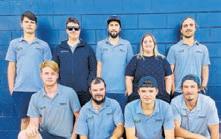

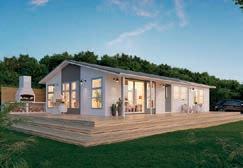


The chill that has recently set in doesn’t have to lock you indoors; there are plenty of outdoor additions that can balance your lifestyle to be outside while it is cold.
Equip your spaces with warmth so you can enjoy the fresh air this winter. There are several outdoor heating options for you to choose from. Ones you and your family can enjoy.
There are various choices for outdoor heaters. Gas heaters are an effective way of warming your decking or patio areas. They come in different sizes, and a reflector casts the warmth out to the areas around it.
If you enjoy the smell and ambience of a fire, you could invest in an outdoor wood fire. Items such as chimineas, fire pits, braziers or fire bowls need to be placed on a non-combustible surface. Place them on concrete or pavers to minimise the risk of fire spreading if something goes wrong. It is always good to be prepared.
A wood fire could become a centrepiece for gatherings or a quiet place for relaxing and winding down from your day. Place your wood fires away from your house, buildings and vegetation and keep a hose or fire extinguisher nearby.
Outdoor electric heaters are another go-to idea to keep you and your family
warm. Look at your local hardware store for a freestanding or wall-mounted outdoor heater.
Think about how many people you want to keep warm and its power efficiency before purchasing one.
A heated patio floor will help take the edge off the chill. It is a consideration if you are doing a new build or want to dip into your savings to completely renovate an outdoor space.
If you don’t want to go all out with a built-in heated floor, heated mats are an option and much cheaper to buy. Plus, they can be portable and moved to wherever you need it. They come in different sizes and wattages.
Enjoy the luxury and benefits of installing a spa in your home. Soaking in a hot tub has been linked to minimising stress, relaxing muscles and promoting cardiovascular health. Some researchers even claim that it improves your sleep.
You can get spas in various dimensions. Smaller ones are often suitable for two people with the generic larger size fitting up to seven. One of the positives of having a spa than a heated pool is that they are often portable and
To connect back with nature connect with us
Warm up your outdoor entertaining areas this winter with additions like a wood burner and other outside heating options

can be relocated to another property if you decide to move.
You can minimise the cost of running a spa by having it insulated. Insulation foam can be a nuisance and makes it
harder to see if there is a leak. One of the best ways to do that is by keeping it in a spa cabinet because it creates easier access for repairs. A decent spa cover also helps maintain heating.

BIOLYTIX WORKS NATURALLY… SO YOU SAVE!
Mother and daughter team Laura and Ellie Larkin are the new owners of Bream Bay GREENWORLD plant nursery.
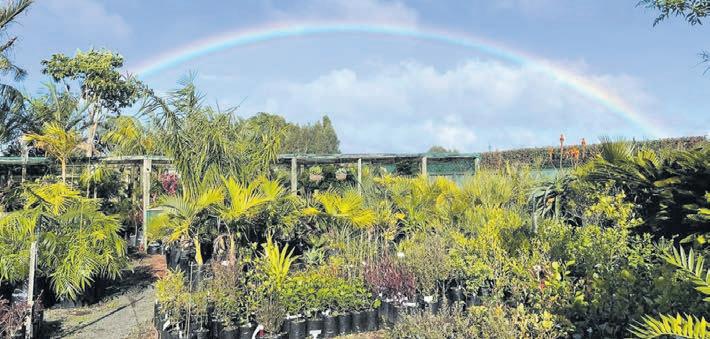
We sell: ground covers, climbers, palms, succulents, edibles, shrubs and specimen trees. We also sell landscaping supplies (by the bag or cubic metre, depending on what the product is) black bark, brown mulch, topsoil, compost, garden mix, potting mix, and lime chip.
And we have bags of fertilizers such as: slow release, top feed, grass seed, citrus fertilizer, blood and bone, sheep pellets and more.
Autumn is a great time to plant! So come and visit us in our little slice of paradise.
Email: breambaygreenworld@gmail.com or phone 0274 952 441.
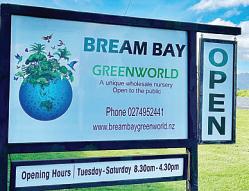
656 One Tree Point Road
We are open from Tuesday - Saturday 8:30am - 4.30pm
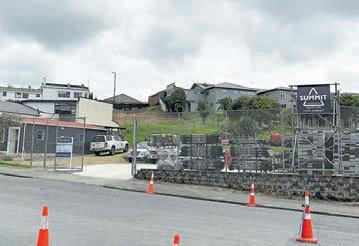
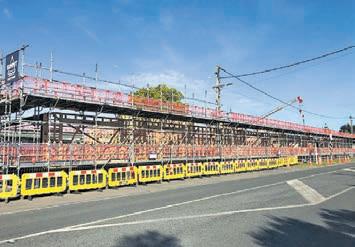
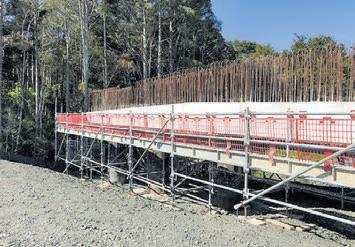

















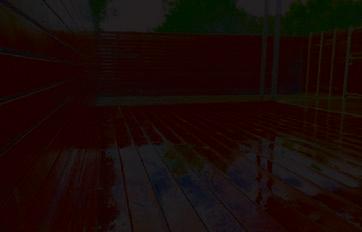




Anne Andrews spends many hours enjoying creating her various pottery items at her studio, Purple Dog Pottery thanks to the help of her partner Graham Wood.
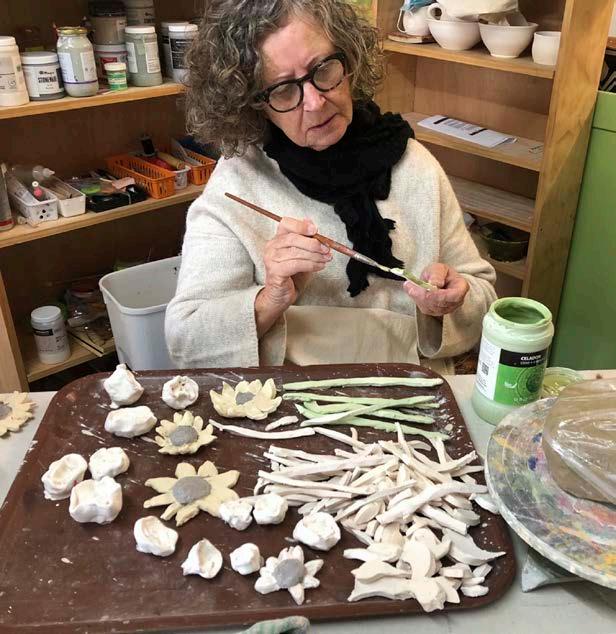
“I was born in Wellington and moved to Whangārei before moving to Ruakākā in the early 1980s,” says Anne.
“I worked at the on-site canteen at the JB2 oil refinery and survived Hodgkin’s disease while working there. I think I survived because my three girls were little, and I had to be here for them. I eventually moved and met my partner Graham when I lived in Titirangi.
“Graham and I retired eight years ago and returned to Ruakākā because I wanted to be back here by the beach doing pottery again.
“I started out at the Bream Bay Combined Arts group and was there for two years before deciding to have a home studio. My friend Esme Kenobi runs the pottery group at BBCA, and we were discussing what to do with the

Esme’s. I also have Biz Moore’s knitting from her home-spun wool and other creations as well.
“We ended up living in Cambridge and had a really bad house sale experience, and because I was so stressed, I decided to try a pottery class.
“I absolutely loved it, but as a manager in retail, my job took over my life, and we eventually sold my kiln and equipment.
things we made, and I decided to open up Purple Dog Pottery in the basement of our house.
“One of my daughters lives in Warkworth, and in her younger years she did a diploma in pottery in Whangārei at the Quarry Arts Centre, so I have her work in my studio alongside me and
“I love pottery because it is therapeutic while being creative, and it’s loads of fun. A lot of people picked it up as a hobby at the BBCA group over the Covid period when they were looking for things to do. For me, I am always learning, even after all these years. You have to master using the wheel, which is really hard, and I still struggle making lids for pots and things. I find YouTube very handy for tutorials as there is a lot to learn including the glazes too. Some run and you have to learn to blend colours and how to use the kiln and fire your work.”
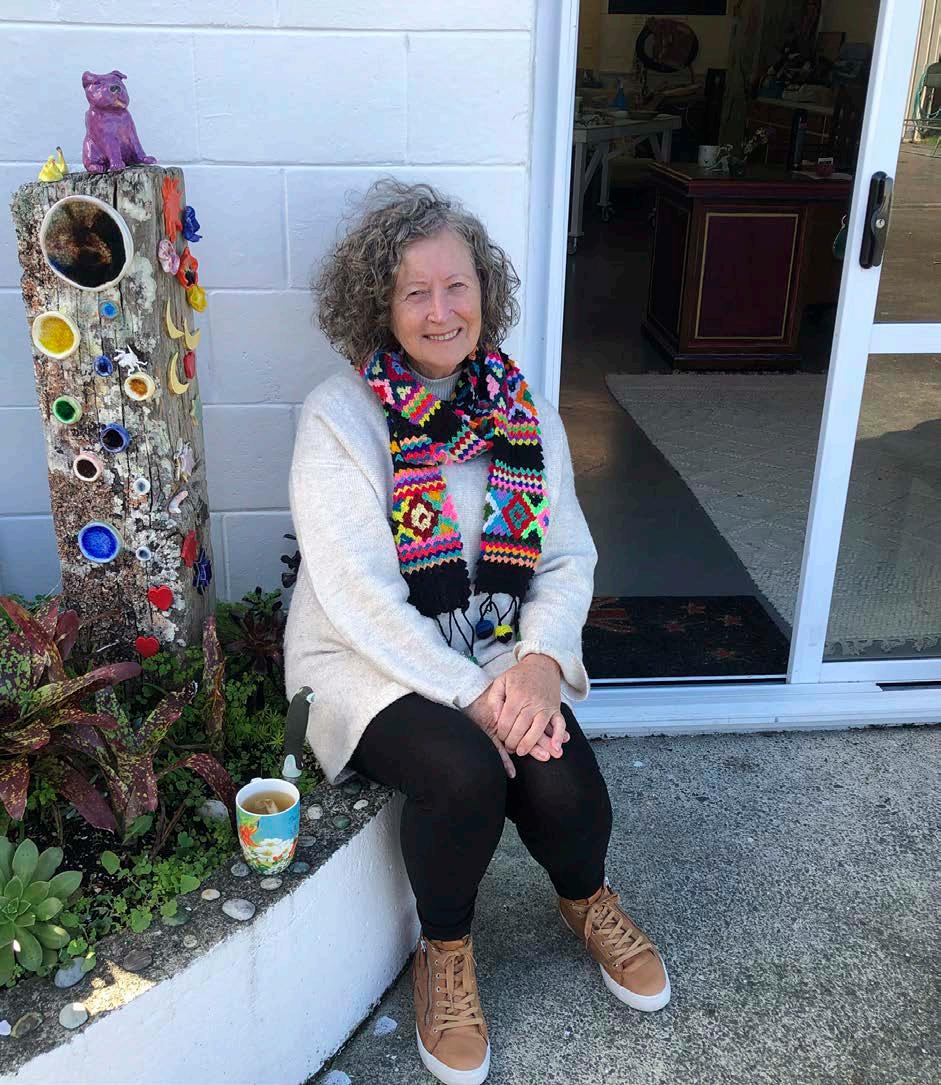
“Graham and I retired eight years ago and returned to Ruakākā”p Anne Andrews named her studio Purple Dog Pottery because it means you can do anything — there are no rules in art p Anne enjoys experimenting with various glaze colours on her creations p Cups, butter dishes, bowls and plates are some of the items Anne and her friend Esme make from their love of pottery
Anne generally purchases her clay from the Quarry Arts Centre in Whangārei.
“The quarry really has brilliant supplies and good quality clay. When you are making something, you knead the clay and then throw it on the wheel and centre the piece before building your item from there before leaving it to dry. Drying could take a week or two weeks in winter, and once it has dried, you bisque fire it before adding the first glaze.
“It is fired again, and the final glaze is put on before being fired a last time at a higher temperature. Mixing the glazes is always interesting. There is a flux glaze that runs, and you never know what colours you will get. It is very exciting not knowing what you will find when you open the kiln. In the old days, you had to make your own glazes, and it was very scientific, but now you buy the colour you want. I go fast when I am centring
my clay. You have to centre it properly, otherwise, if you are making a cup, for example, it will go all wonky when you pull up the sides. Once it is centred, I slow down to make the shape. The speed you work at is up to the individual. Some people who are really good go fast the whole time.
“My favourite thing to make is butter dishes, which people seem to really want nowadays, and I enjoy making plates. I roll the clay out and press it into a mould. Currently, I am starting to use a very rough clay and painting the items in wishy-washy earthy greens which people enjoy.
“I made three plates last week and put them on our Purple Dog Pottery Facebook page, and they sold very quickly, which was encouraging. It is about finding out what people like and want. I always thought the butter dish was a good idea, and the plates excite
me. I didn’t grow up in an arty family, although my dad was a little bit arty, but he had six children so was a bit busy. His family were great at music, but none of us kids were musical.
“As I got older, I realised I loved any form of art. I think in our days at school, painting and art wasn’t really pushed, but as I got older and my girls went to school, I found I enjoyed doing art with them. One daughter is now a dressmaker, and the other a potter.
“Making pottery is quite a long process and a lot of work is involved, that is why pottery can be expensive to buy. At Purple Dog Pottery we keep our prices reasonable as we want our items to be used and loved by people rather than have stock in storage.
“Purple Dog Pottery is open Friday, Saturday and Sunday from 9am–5pm at 40 Marsden Point Road, Ruakākā. We also have the Purple Dog Pottery
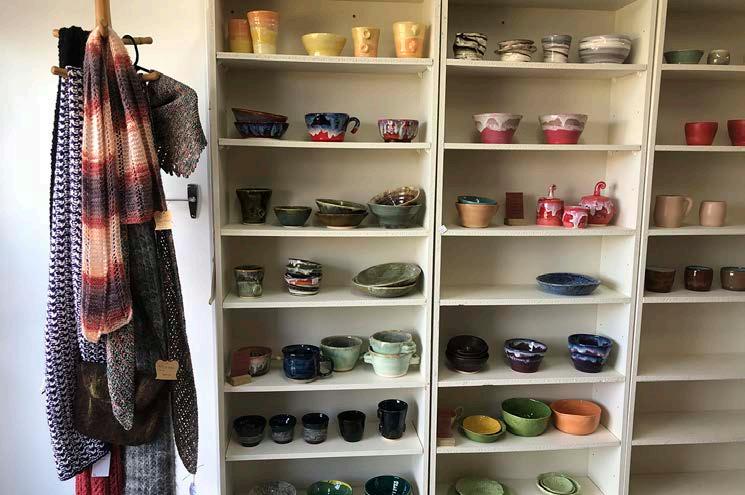
Facebook page for people to look at. We came up with the name Purple Dog Pottery because, in art, it means you can make anything you like, even though there is no such thing.
“One day, when my daughter was young, at school, the teacher told her to paint a picture, so she painted a purple dog. The teacher told her she couldn’t because there was no such thing as a purple dog.
“My daughter tried to tell her there are no rules in art, and that’s why I call my studio Purple Dog Pottery.
“I couldn‘t do what I do without Graham. He is a real handyman and fixes things if they break down. He does most of my kiln work, looks after the electronics, and brings the shelves to me. If it wasn’t for him, we wouldn’t have the studio. He doesn’t do pottery, but I think he would be really good at it if he tried.”
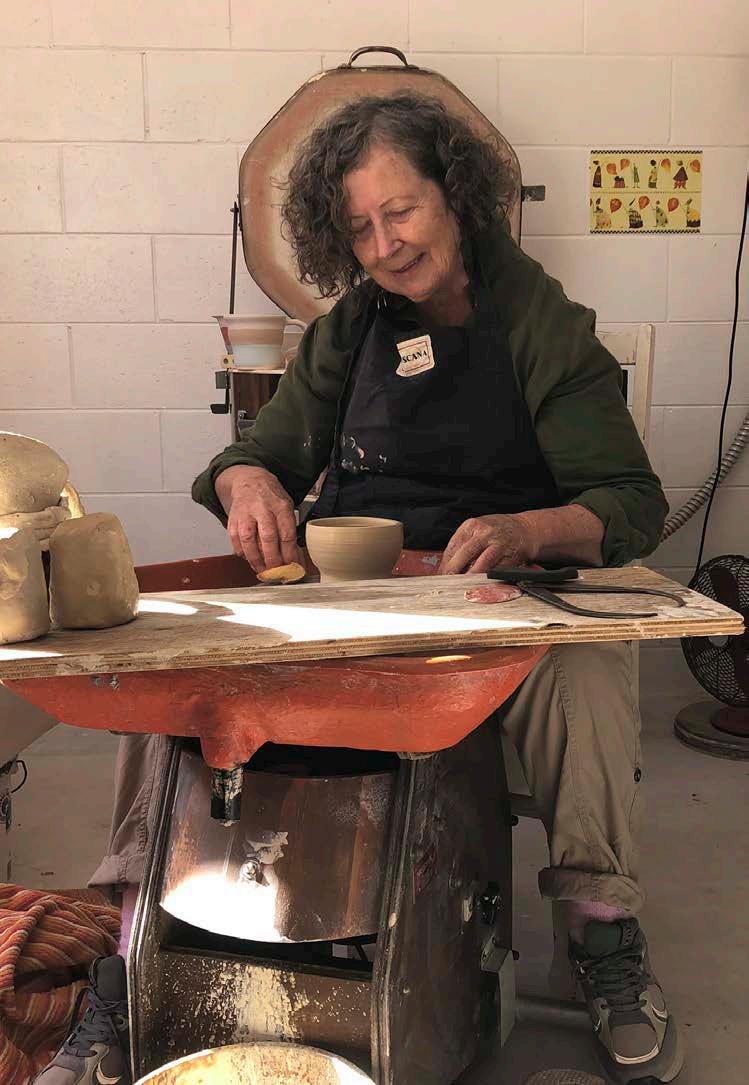
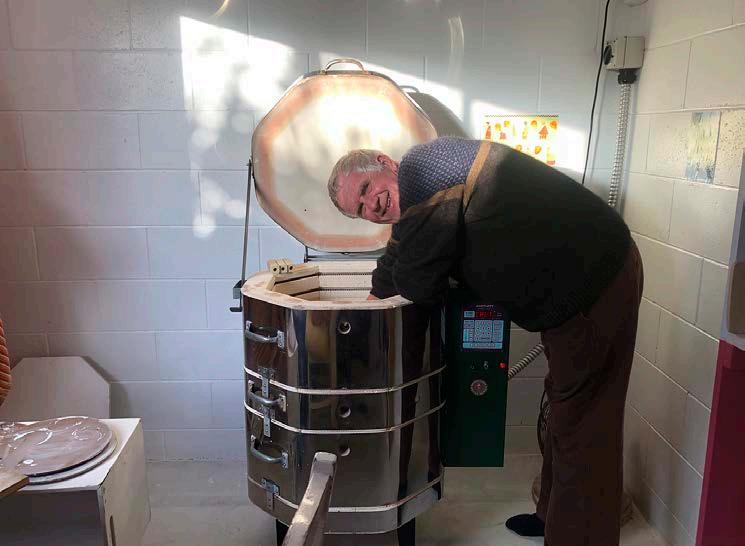
“Making pottery is quite a long process and a lot of work is involved, that is why pottery can be expensive to buy”
New Zealand will have a firearms registry from 24 June 2023. If you’re a firearms licence holder, you’ll be required to provide information about your arms items from this date.
We want to enable the legitimate use of firearms for feeding our whānau, conservation, farming and recreation while keeping our communities safe.
Scan here for more information
Te Tari Pūreke – Firearms Safety Authority is responsible for managing firearms in New Zealand.
Register
The Registry will help us make New Zealand safer.
It will give licence holders more confidence when buying or selling firearms, as the Registry will let you know if you’re dealing with a current licence holder and if the firearm has been reported stolen.
You must tell us about any firearms in your possession within 5 years.
The Registry is one of the ways we’re strengthening how we manage firearms in New Zealand. With responsible firearms licence holders doing the right thing and filling in the Registry, it will help keep track of legally owned firearms and prevent their transfer to those who use them for criminal purposes.
You can quickly and easily register your firearms on our website at any time. Just click on MyFirearms. Otherwise our Registry and Services team will be available by phone to help during business hours.
You have until 24 June 2028 to register your firearms. However there are some circumstances where you must provide information for the Registry in a shorter time frame. These are referred to in the Arms Amendment Regulations as ‘activating circumstances’. You can find information on these timeframes at: firearmssafetyauthority.govt.nz/registry
Applying for a licence or endorsement
Exporting a firearm
What
Selling or buying a firearm Manufacturing a firearm
Supplying or receiving a firearm other than temporary transfer that is under 30 days
Modifying a firearm from non-prohibited to prohibited, or prohibited to non-prohibited
Notifying us of a change in circumstances, such as a change of address
Loss, theft or destruction of a firearm
Importing a firearm or ammunition
If you’re subject to any compliance or enforcement action under the Arms Act
When one of these circumstances happen, we’ll contact you and let you know what you need to do. However, it’s up to you to ensure you keep your information up to date.
needs to be registered
Prohibited firearms
Pistols
Restricted weapons
• Type (rifle, shotgun etc)
• Make
• Model
• Action
• Calibre/gauge
• If it has a non-detachable magazine (and, if so, its capacity)
• Identifying marking (serial number)
• A photograph of the firearm (if requested)
Apply for a firearms licence and update your contact details online using MyFirearms: a secure, online portal available at www.firearmssafetyauthority.govt.nz

For more information on Te Tari Pūreke and any legislative or regulation changes that may affect you, go to www.firearmssafetyauthority.govt.nz
TPP-RegistryAdvertorial370x264V1.indd 1 15/05/2023 16:13
ACROSS: 1 Dungeon, 4 Apprentice, 9 Earring, 13 Bach, 14 Bribed, 15 Roamed, 16 Forgery, 19 Scoreboard, 20 Compress, 21 Alien, 24 Crabby, 25 Grease, 27 Disembark, 32 Graffiti, 33 Frozen, 34 Mustard, 38 Laughter, 39 Follow, 40 Tray, 41 Paste, 42 Droop, 45 Tread the boards, 52 Mayor, 55 Scrim, 56 Plug, 57 Enrage, 58 Drainage, 61 Beneath, 62 Oblige, 63 Nonsense, 66 Spherical, 68 Sister, 69 Trying, 73 Mitre, 74 Abattoir, 76 Suspenders, 81 Thistle, 82 Forest, 83 Encode, 84 Stun, 85 Isolate, 86 Glasshouse, 87 Swindle.
DOWN: 1 Debts, 2 Nicholas, 3 Narrow, 4 Amber, 5 Pods, 6 Earache, 7 Trauma, 8 Clear, 10 Anon, 11 Regular, 12 Nursed, 17 Membership, 18 Asked, 22 Marigold, 23 About, 24 Circled, 26 Ruin, 28 Inertia, 29 Affect, 30 Cobweb, 31 Grotto, 33 Filch, 35 Tiara, 36 Ludo, 37 Hard, 43 Racket, 44 Olive, 46 Role, 47 Algebra, 48 Thesis, 49 Eerie, 50 Organist, 51 Served, 52 Mainspring, 53 Year, 54 Reeking, 59 Ether, 60 Ante, 64 Limbs, 65 Bisected, 67 Parasol, 68 Scratch, 70 Riches, 71 Lovers, 72 Spades, 75 Troll, 77 Uncle, 78 Singe, 79 Plot, 80 Peru.
ten words — five across the grid and five down. More than one solution may be possible.
THE GALLERY
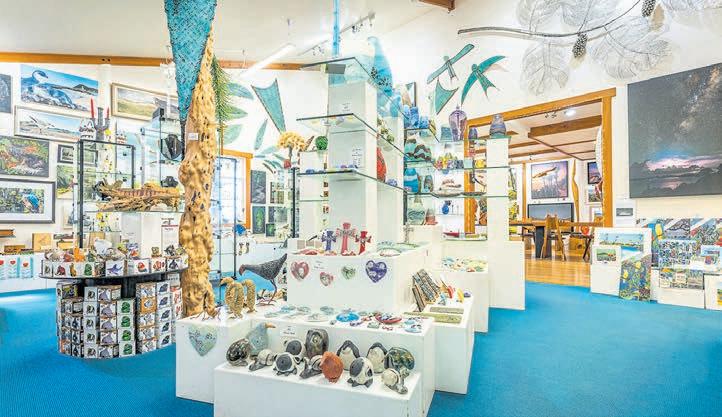
The Gallery has a wide-ranging collection of art by established and emerging New Zealand artists, many of which are Northland based – this includes contemporary Maori and Pacific artists. There is an outstanding selection of paintings, wood art, handmade furniture, sculpture, jewellery, glass and ceramics. Our catalogue changes frequently, so please make an enquiry and we’ll confirm with you.
GALLERY HOURS: OPEN SEVEN DAYS, 10AM TO 5PM
CONTACT PETER 09 433 9616 | PETE@GALLERYHELENABAY.CO.NZ
THE CAFE
Discover the Cafe on Helena Bay Hill, along the Secret Coast Route. We’re ready to serve fair-trade coffee and tempting homemade goodies from our cabinet or delicious meals from our menu. Relax in the ambiance of spectacular ocean and bush views and a warm atmosphere with the camaraderie of attentive and personable staff. It’s not just another cafe, it’s an experience!

OPENING HOURS:
THURSDAY - MONDAY OPEN FROM 10AM TO 4PM KITCHEN OPERATES UNTIL 3PM
CONTACT JANET 09 433 9934 | HELENABAYCAFE@GMAIL.COM
THE GARDENS
One of the highlights of a visit to the Gallery and Cafe Helena Bay Hill is the beautiful garden setting. You are welcome to wander and relax in the garden during your visit. You’ll find many sculptures placed among the subtropical plantings, giving inspiration for your own landscaping ideas.

1392 Old Russell Road, RD4 Hikurangi
